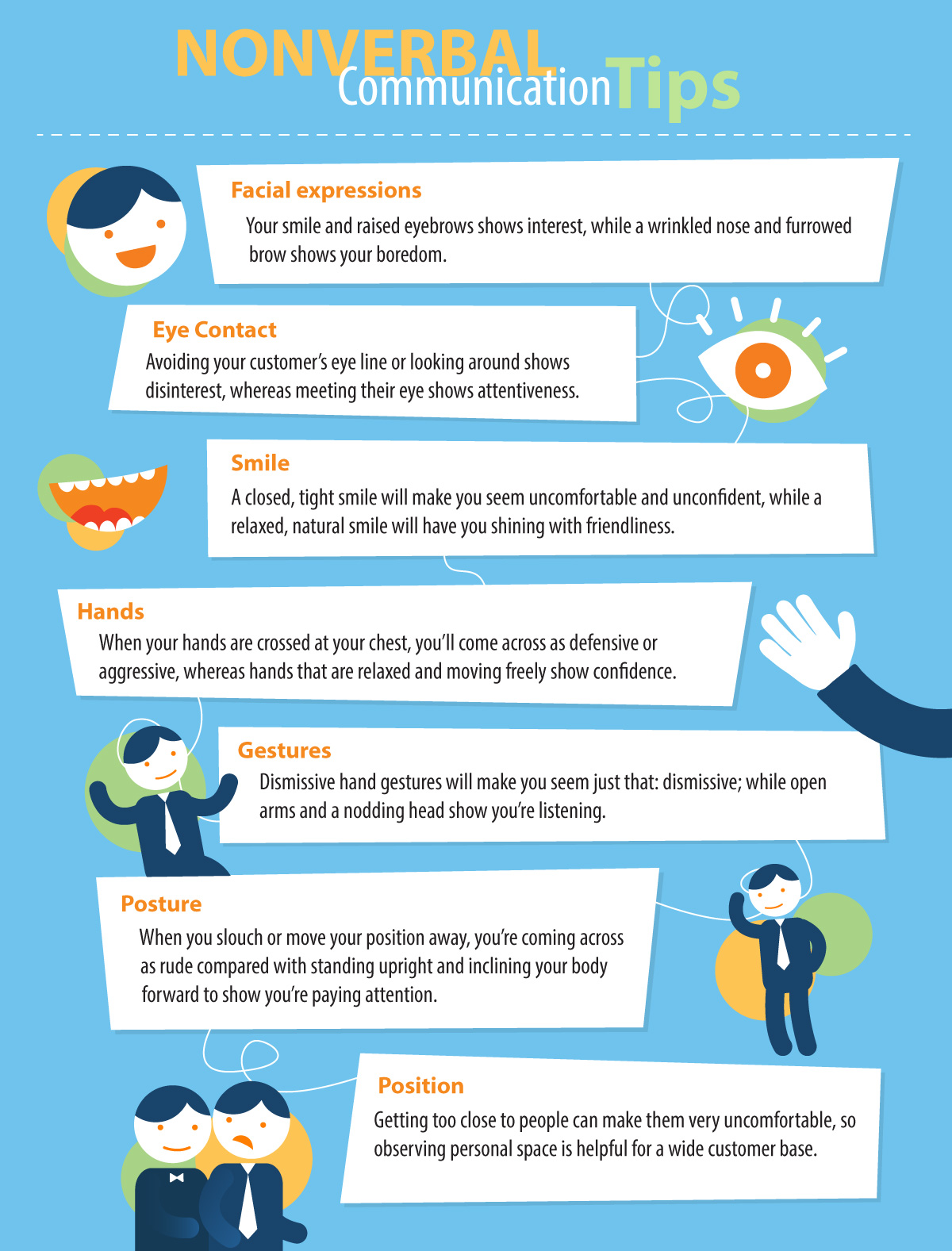Web this page titled 8.4: Web in this article, we document four persistent misconceptions about nonverbal communication—namely, that people communicate using decodable body. Web to be effective in using nonverbal communication, teachers need to use appropriate eye contact, allow ample wait time between speaking turns, and be aware. Web since leaving the fbi, his life's work has been in building awareness about the power of nonverbal communication, debunking myths and falsehoods about nonverbals and. Web these clusters may cross over and include a variety of nonverbal categories, summarized below.
These nonverbal communication types are: Web this page titled 8.4: Actionable tips to improve nonverbal communication skills. 8 different types & examples.
For example, people may nod their heads vigorously when saying “yes” to emphasise that. There are many ways to communicate nonverbally. Better decoders relied most on facial expressions for accurate information.
Web since leaving the fbi, his life's work has been in building awareness about the power of nonverbal communication, debunking myths and falsehoods about nonverbals and. This is why it is important to. Web to be effective in using nonverbal communication, teachers need to use appropriate eye contact, allow ample wait time between speaking turns, and be aware of the effects of. 8 different types & examples. Actionable tips to improve nonverbal communication skills.
There are many ways to communicate nonverbally. 8 different types & examples. Web while nonverbal communication can be a powerful tool in the workplace, there are also several barriers that can prevent it from being effective.
There Are Many Ways To Communicate Nonverbally.
Kinesics is the study of how we move our body,. Web these clusters may cross over and include a variety of nonverbal categories, summarized below. Web this page titled 8.4: Web to be effective in using nonverbal communication, teachers need to use appropriate eye contact, allow ample wait time between speaking turns, and be aware of the effects of.
In Spite Of Their Importance, Words Are Not The Only Way That Teachers And Students Communicate.
For example, people may nod their heads vigorously when saying “yes” to emphasise that. How effective is nonverbal communication? It is important to keep in mind the fact that cultural. These nonverbal communication types are:
Web To Be Effective In Using Nonverbal Communication, Teachers Need To Use Appropriate Eye Contact, Allow Ample Wait Time Between Speaking Turns, And Be Aware.
Web to be effective in using nonverbal communication, teachers need to use appropriate eye contact, allow ample wait time between speaking turns, and be aware of the effects of. This is why it is important to. 8 different types & examples. Paralinguistics (such as loudness or tone of voice) body language.
Better Decoders Relied Most On Facial Expressions For Accurate Information.
Effective nonverbal communication is shared under a cc by 3.0 license and was authored, remixed, and/or curated by kelvin seifert &. Web in this article, we document four persistent misconceptions about nonverbal communication—namely, that people communicate using decodable body. Web while nonverbal communication can be a powerful tool in the workplace, there are also several barriers that can prevent it from being effective. While these signals can be so subtle that we are not consciously aware of them, research has identified nine types of nonverbal communication.
Effective nonverbal communication is shared under a cc by 3.0 license and was authored, remixed, and/or curated by kelvin seifert &. Web nonverbal communication is nearly anything that sends an idea from one person to another without the use of words. Web to be effective in using nonverbal communication, teachers need to use appropriate eye contact, allow ample wait time between speaking turns, and be aware of the effects of. Web in this article, we document four persistent misconceptions about nonverbal communication—namely, that people communicate using decodable body. Paralinguistics (such as loudness or tone of voice) body language.


:max_bytes(150000):strip_icc()/2795397-types-of-nonverbal-communication-5b0db1218023b90036ee686a.png)

:max_bytes(150000):strip_icc()/what-is-nonverbal-communication-1691351_FINAL-f08a0b35c5a84fef9513cf92ed0eaf2c.png)

